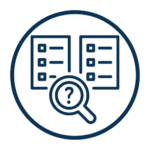In business, there are many instances when it makes more sense to “rent” or “lease” an asset instead of outright purchasing it. This can range from leasing the building or office space you’re using to vehicles to even “smaller” things like copiers. And if you haven’t heard yet, there is a new leasing standard that brings monumental changes (191 pages of new rules to follow!!) to how your company will report leased assets.
Though the new leasing standard is designed to help with financial transparency, it can greatly impact business owners who don’t take the time to prepare accordingly. Here are the items you need to know.
ASU 2012-02 Leasing Standard
What is the Leasing Standard?

Why Did the Rules Change?

When Does This Go Into Effect?
Who is Affected by the Leasing Standard (ASU 2012-02)?
Essentially, if you are the lessee (the person leasing the asset), you have a any leases that last longer than one year, and your business follows the generally accepted accounting principles (GAAP) framework – you are subject to the changes instituted by the new leasing standard.
You May be Unaffected if...
This Applies to You if...
If you are the owner of the asset that is being leased, these changes generally will not affect you.
If you are the lessee, but the lease is 12 months or less and does not include an option to purchase the underlying asset, there is a workaround.
In this situation, you may elect to not recognize the right-of-use assets and lease liabilities of short-term leases. Instead of following the new rules, the lease payments are recognized as lease cost on a straight-line basis over the lease term and any variable lease payments in the period in which the obligation for those payments is incurred.
If you currently have rental or lease agreements, or plan to in the future, you need to be aware of the changes discussed in this blog.
If you are required to complete financial reporting under generally accepted accounting principles (GAAP) framework.
What is Considered a "Lease" for ASU 2012-02?
The standard establishes leases to be either finance (previously capital) or operating. Finance leases are determined using more of a principals-based model versus a rules-based model, following the FASB & IFRS convergence trend that we have seen over the last several years. Operating leases are any leases that do not qualify as a finance lease. A lease is a finance lease (and is therefore subject to the leasing standard) if it meets anyone of the following:
- The lease transfers ownership of the underlying asset to the lessee by the end of the lease term.
- The lease grants the lessee an option to purchase the underlying asset that the lessee is reasonably certain to exercise.
- The lease term is for the major part of the remaining economic life of the underlying asset.
- The present value of the sum of the lease payments and any residual value guaranteed by the lessee equals or exceeds substantially all of the fair value of the underlying asset.
- The underlying asset is of such a specialized nature that it is expected to have no alternative use to the lessor at the end of the lease term.
I Have a Finance Lease - How Does The New Leasing Standard Affect Me?

Right of Use
Lease liabilities will be recorded at the present value of remaining rental payments using a discount rate and amortized over the life of the lease.
Covenants

Taxes
How Do I Prepare for the New Leasing Standard?
We have four suggestions that will help you prepare for these changes.
- Locate Current Lease Agreements: All leases need to be evaluated. That 25-year building lease that was filed in a cabinet 15 years ago? Dig it up! Under the new standard, you’ll need it to determine whether you truly have a lease and to properly classify it for financial reporting.
- Reassess Agreements: Be proactive! Take this as an opportunities to re-evaluate and re-negotiate leases to create easier and less impactful implementation in a few years.
- Proforma Financials: Do a proforma of your financials, with the lease standard implemented on the prior year to see the impact coming your way.
- Talk to Your Accountant: You are welcome to read all 191 pages, additional changes, and newly published guidance in your leisure here. But you don’t have to go about this alone! Please reach out to one of our professionals and we can help you create a road-map to prepare for the implementation period.

Kirsten Robertson
A Strategic Analyst on our assurance team, Kirsten maintains expertise to provide auditing services with a specialization in Avizo’s governmental and construction-based niches. She is one of the primary leads on our in-field audits and completes training for all members of the firm before they visit clients offices.

